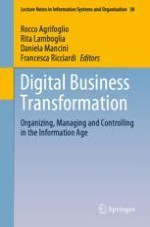2020 | OriginalPaper | Chapter
Digital Competences for Civil Servants and Digital Ecosystems for More Effective Working Processes in Public Organizations
Authors : Nunzio Casalino, Tommaso Saso, Barbara Borin, Enrica Massella, Flavia Lancioni
Published in: Digital Business Transformation
Publisher: Springer International Publishing
Activate our intelligent search to find suitable subject content or patents.
Select sections of text to find matching patents with Artificial Intelligence. powered by
Select sections of text to find additional relevant content using AI-assisted search. powered by
